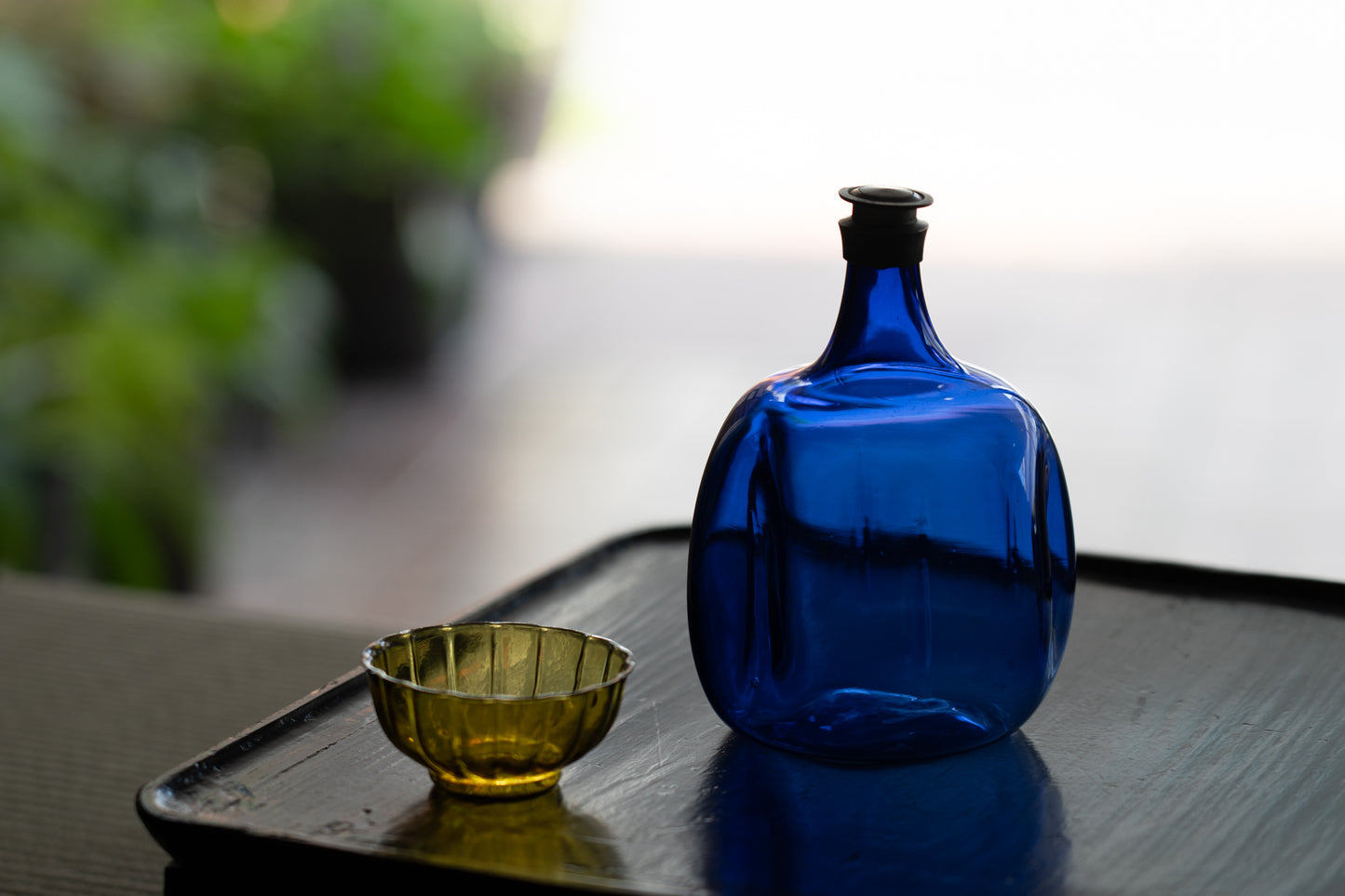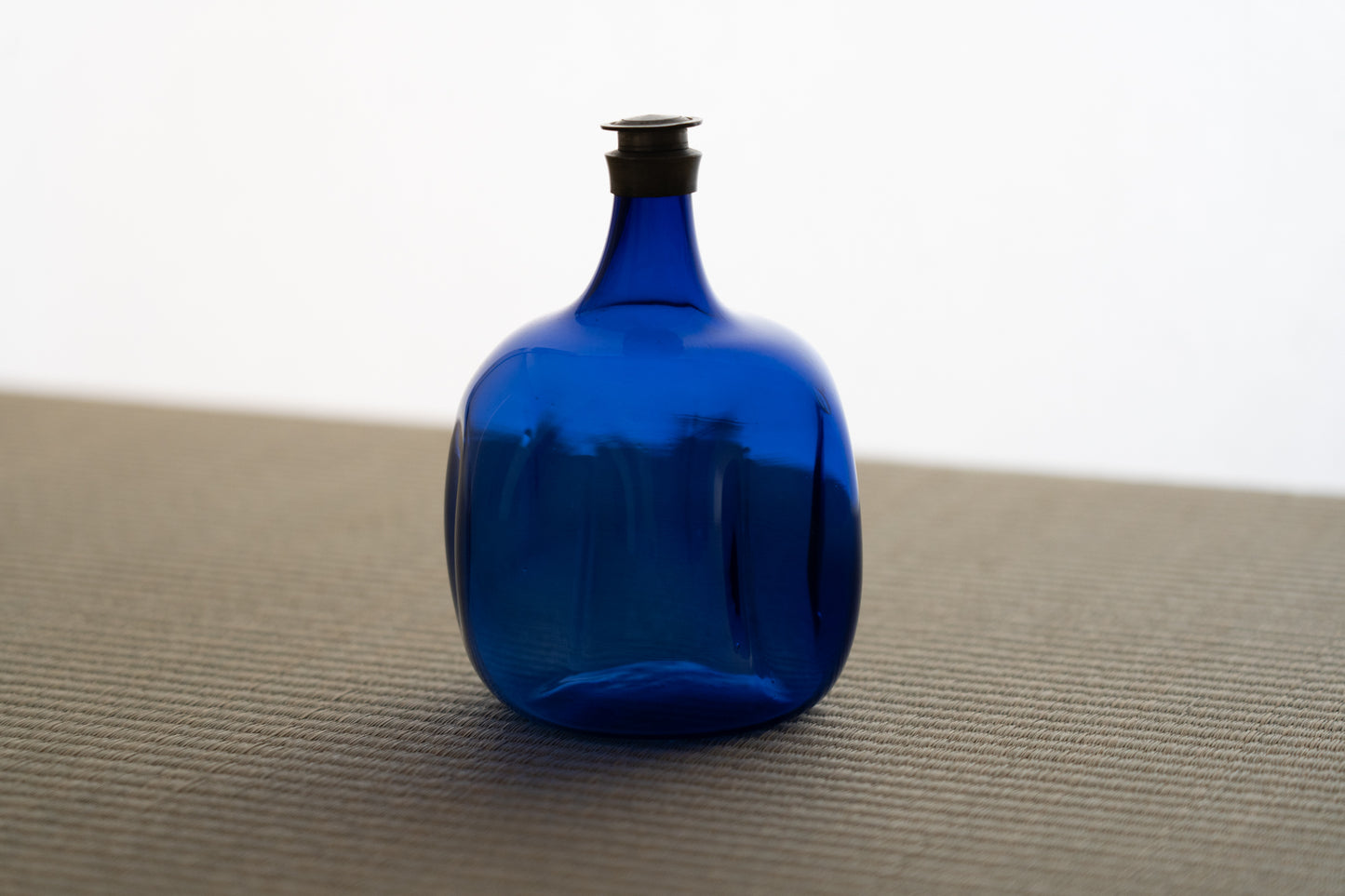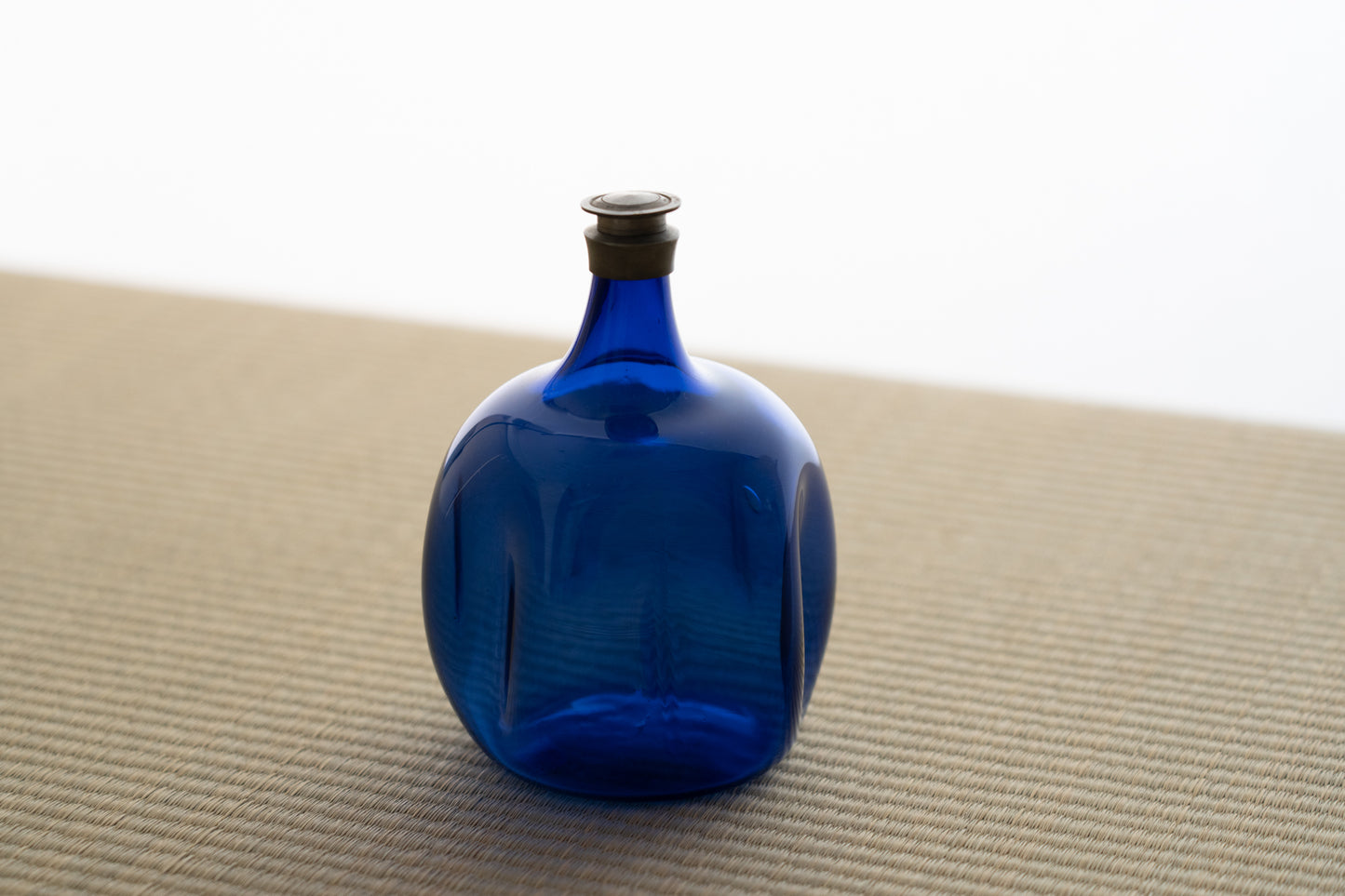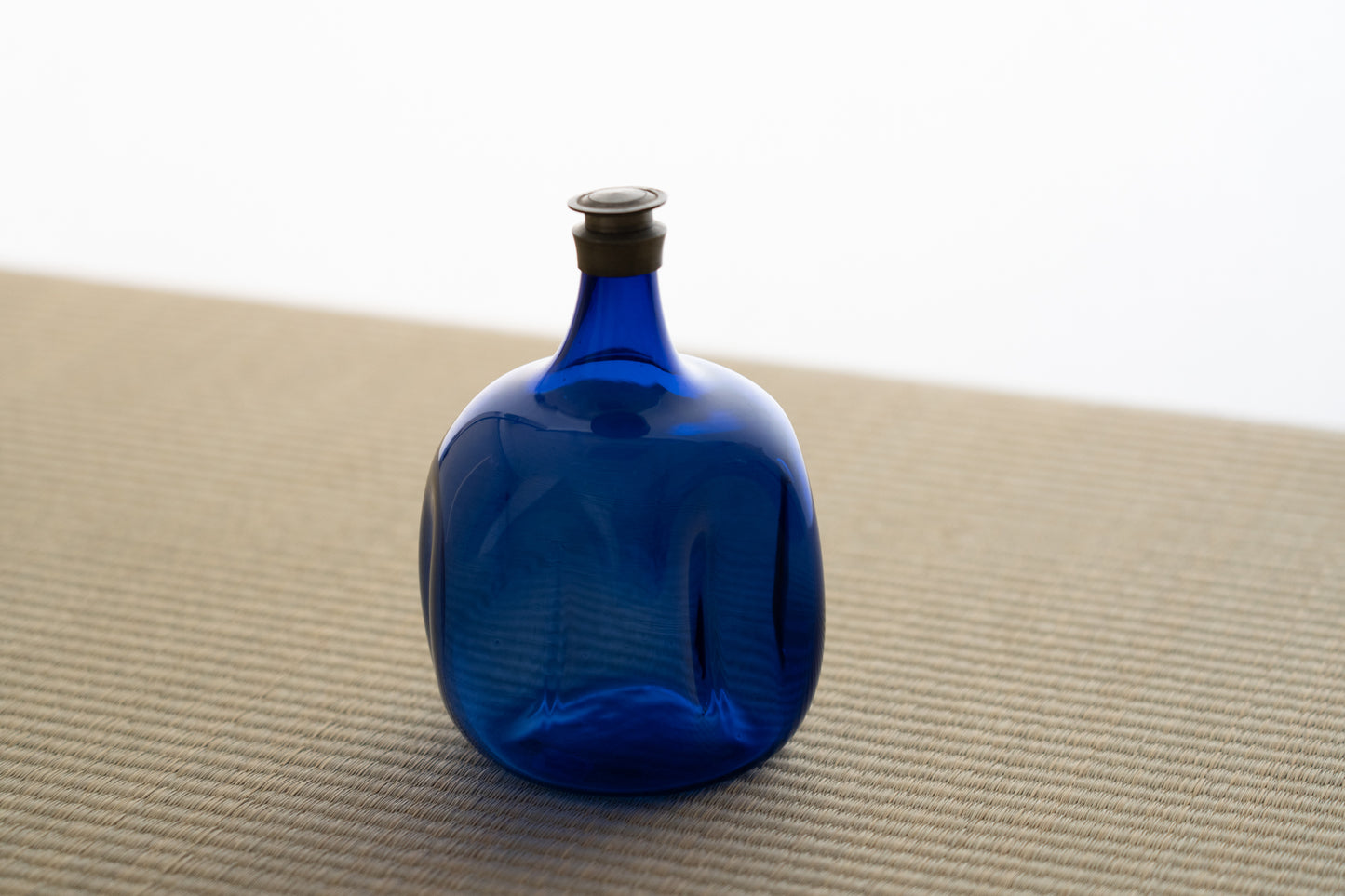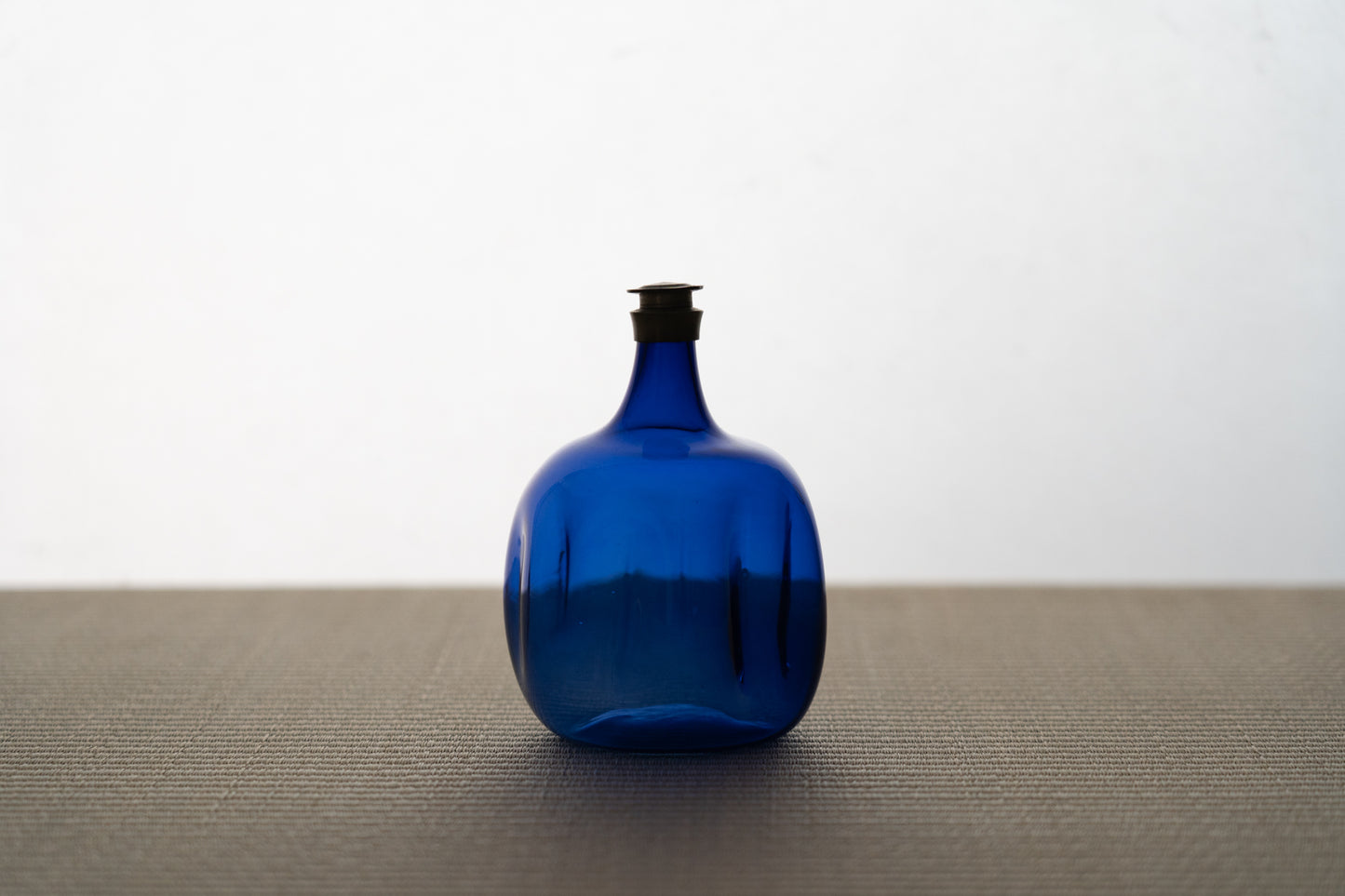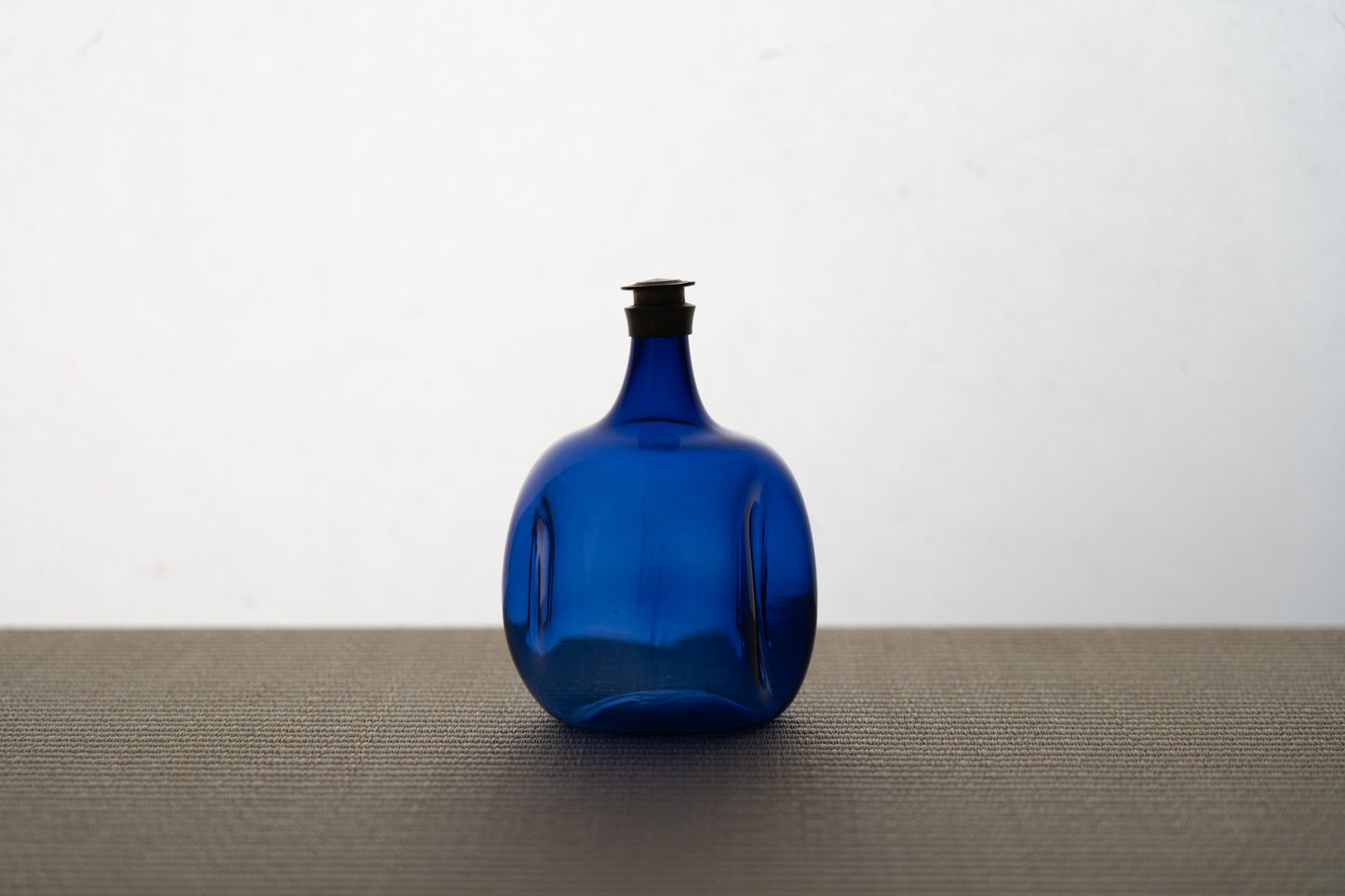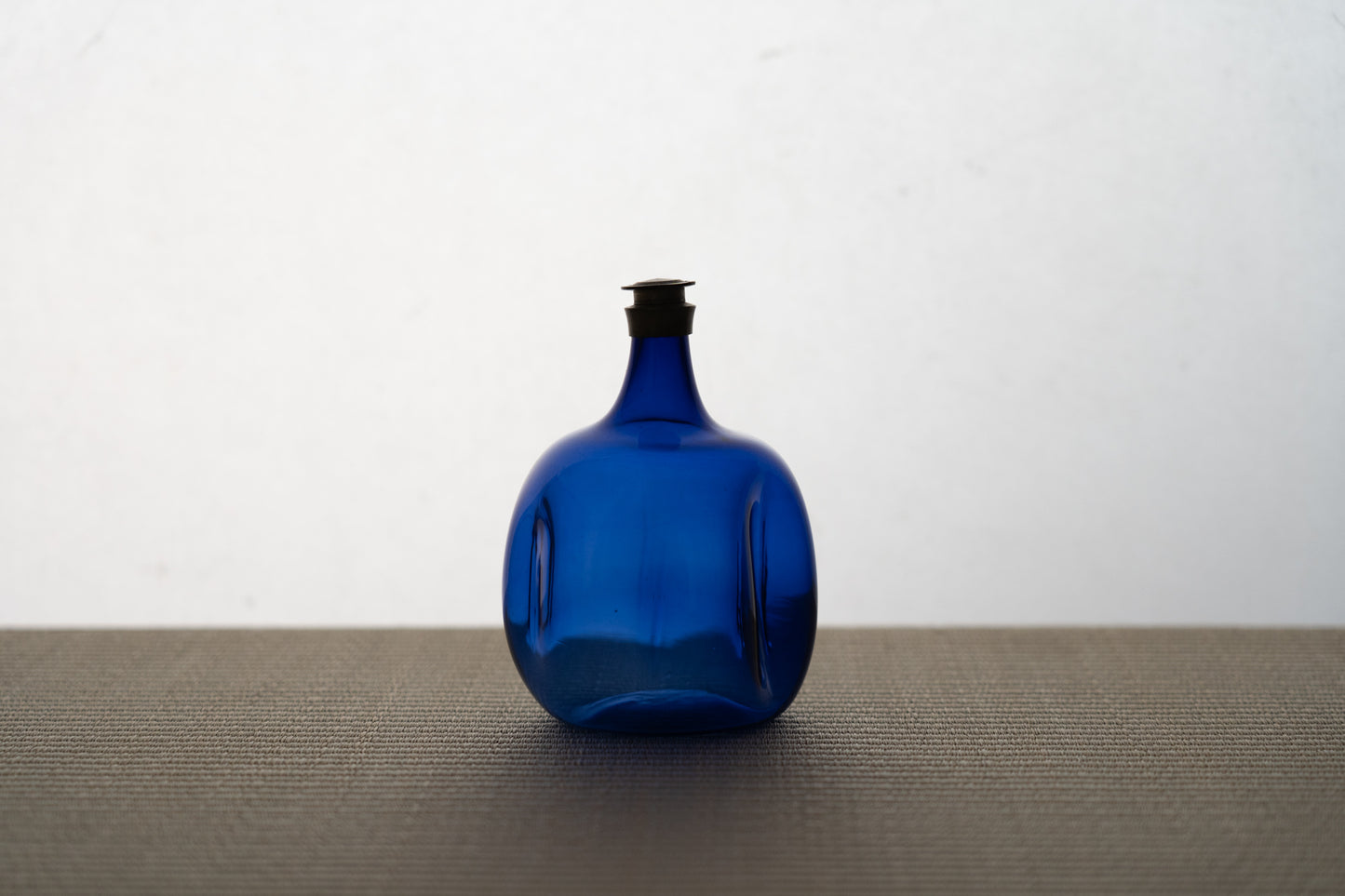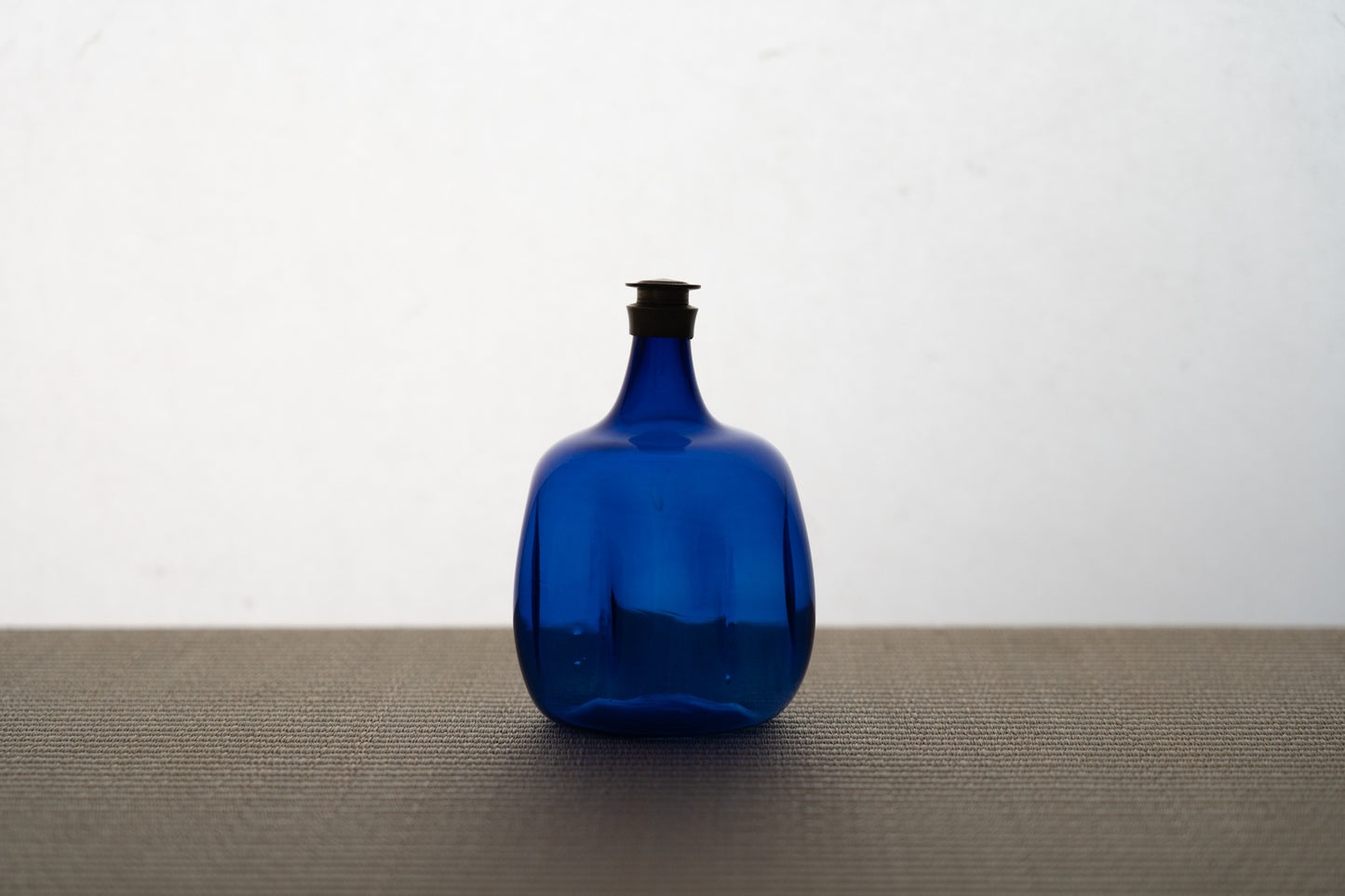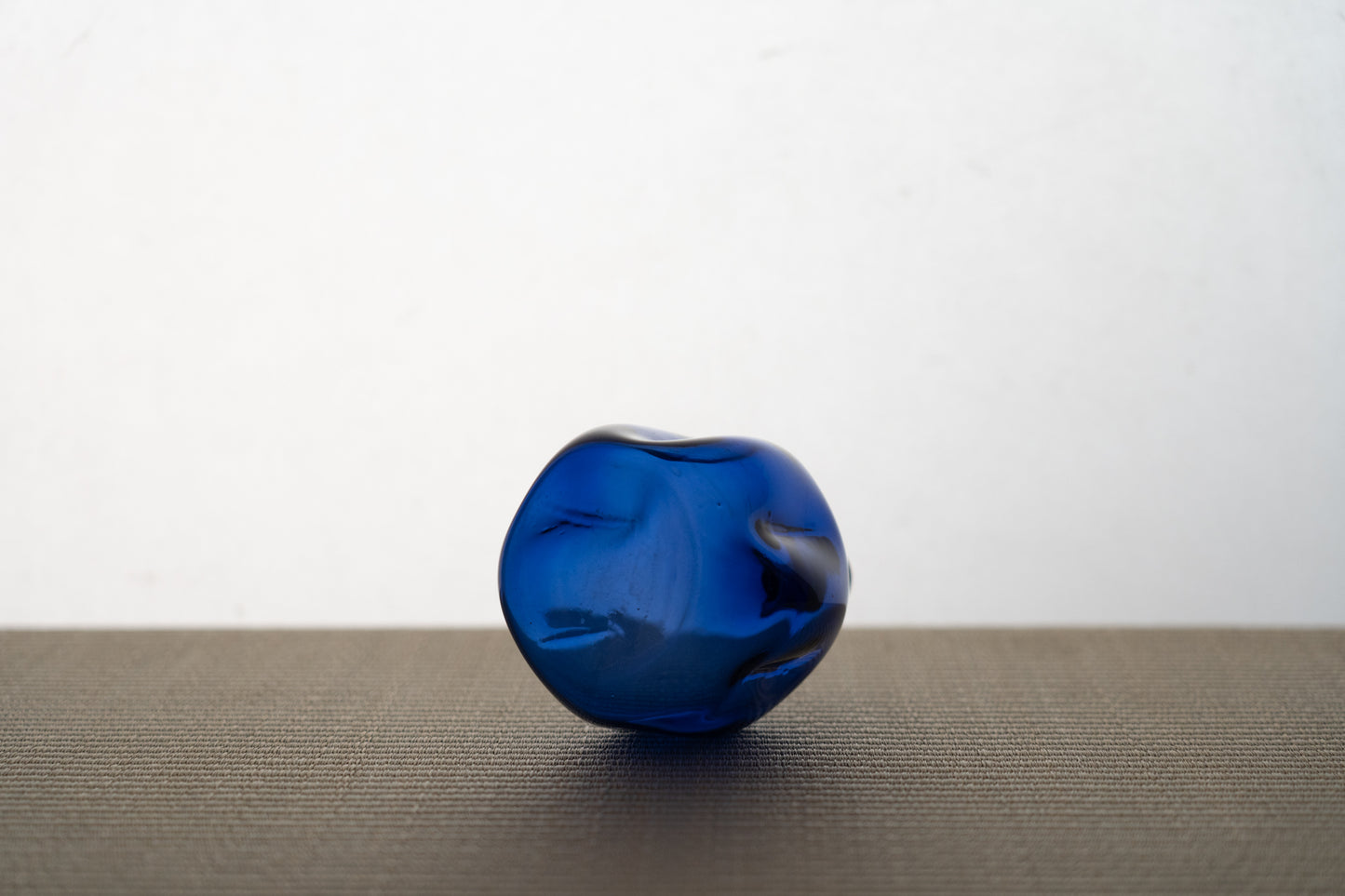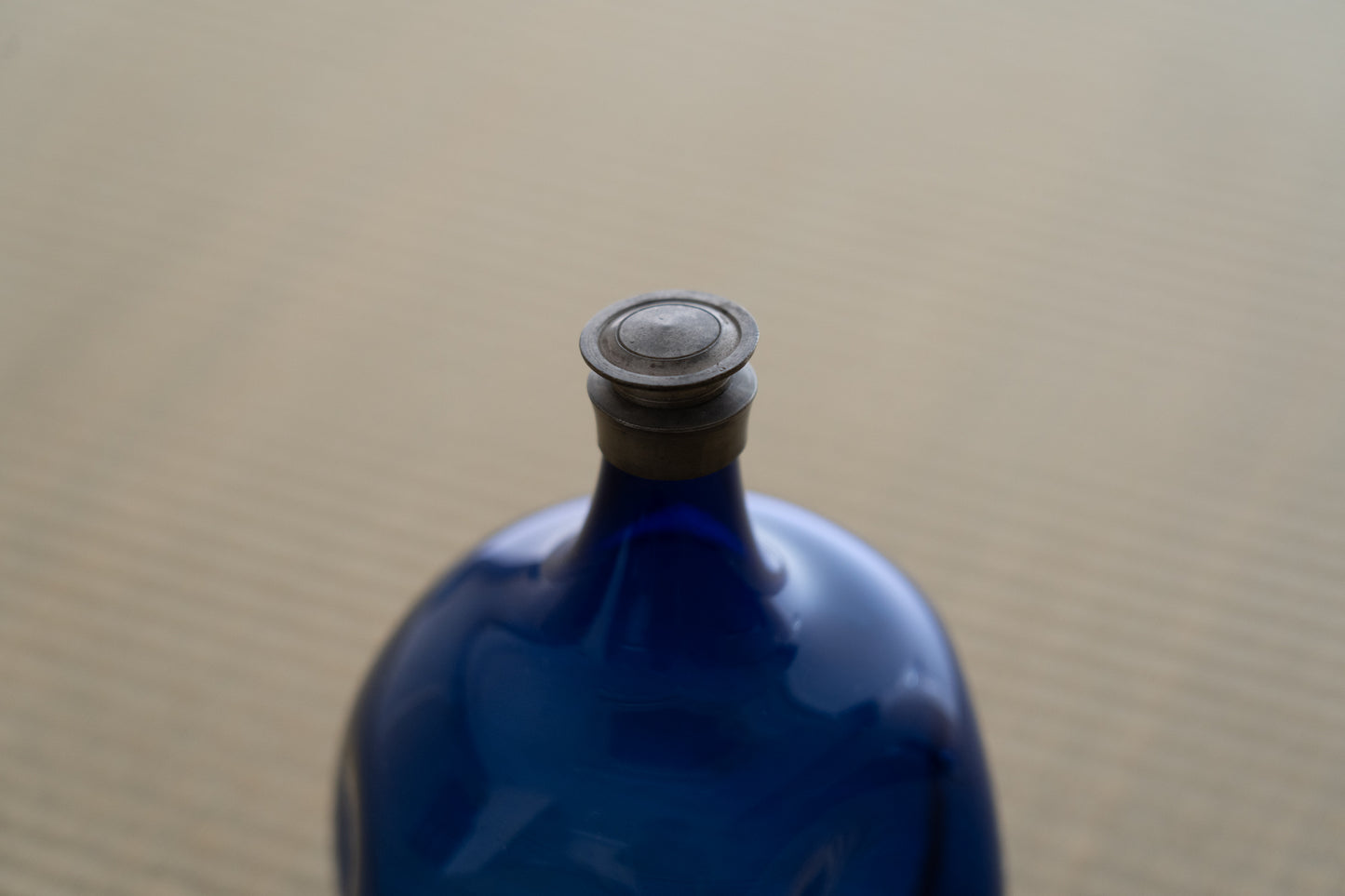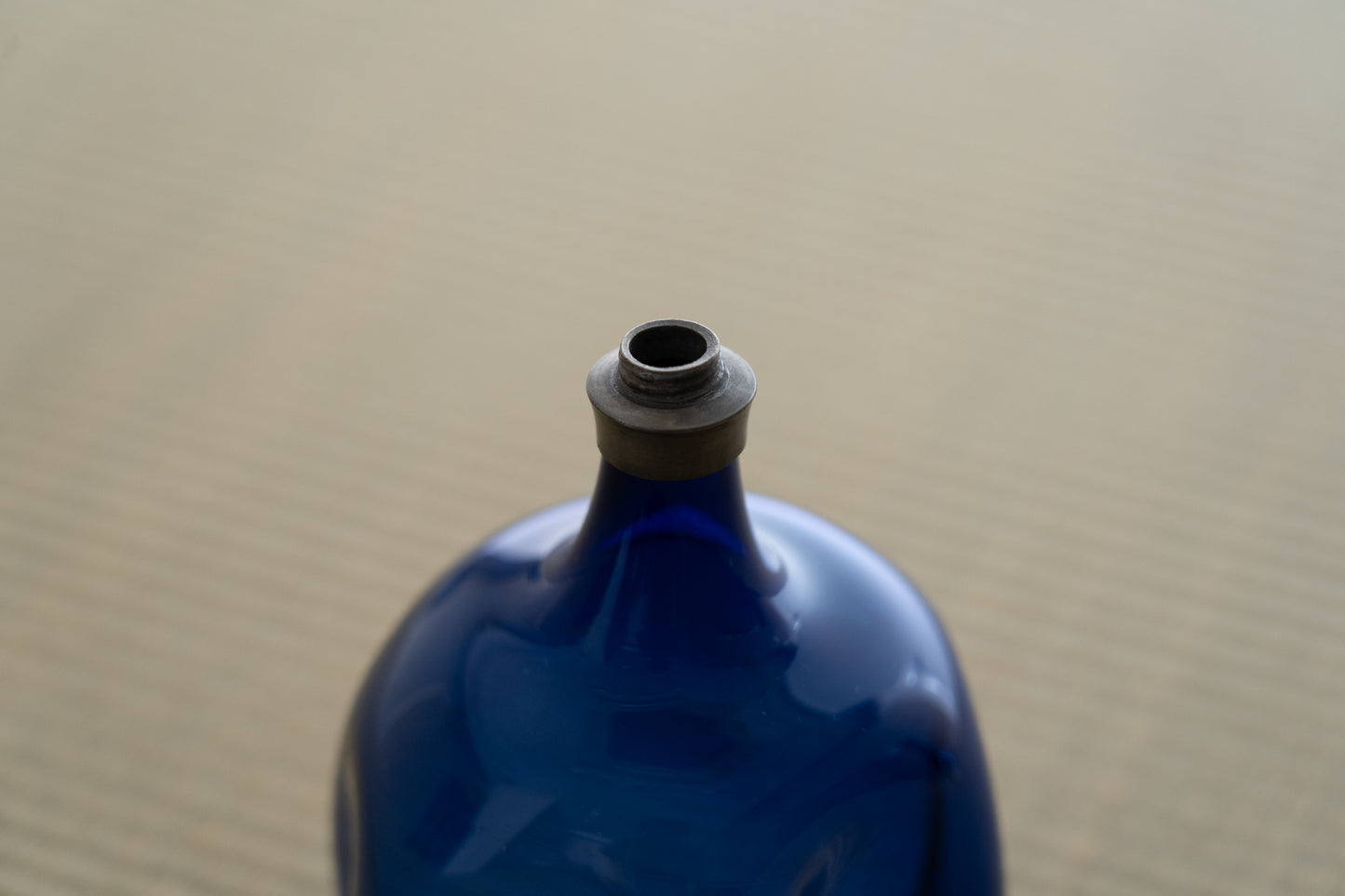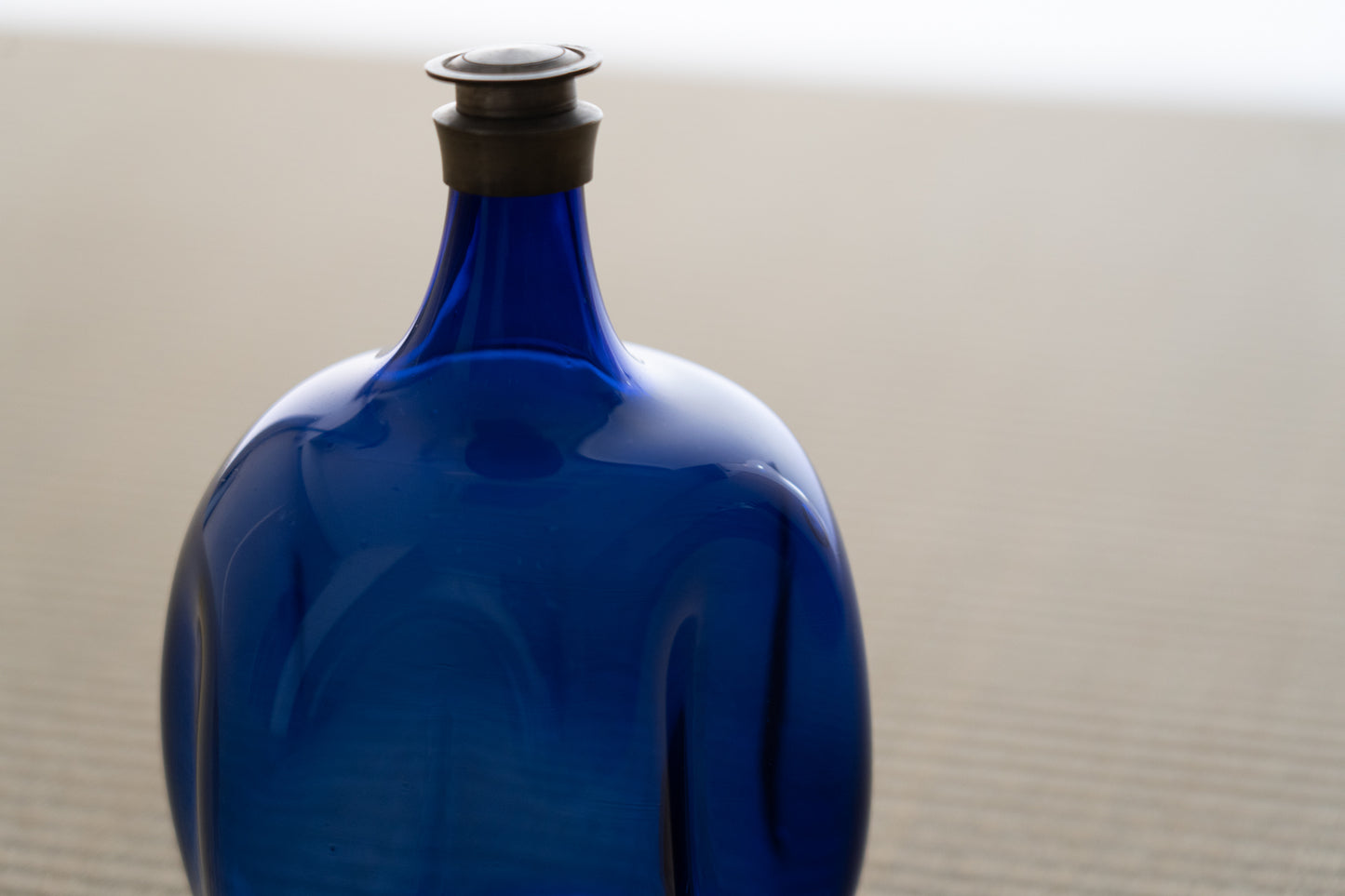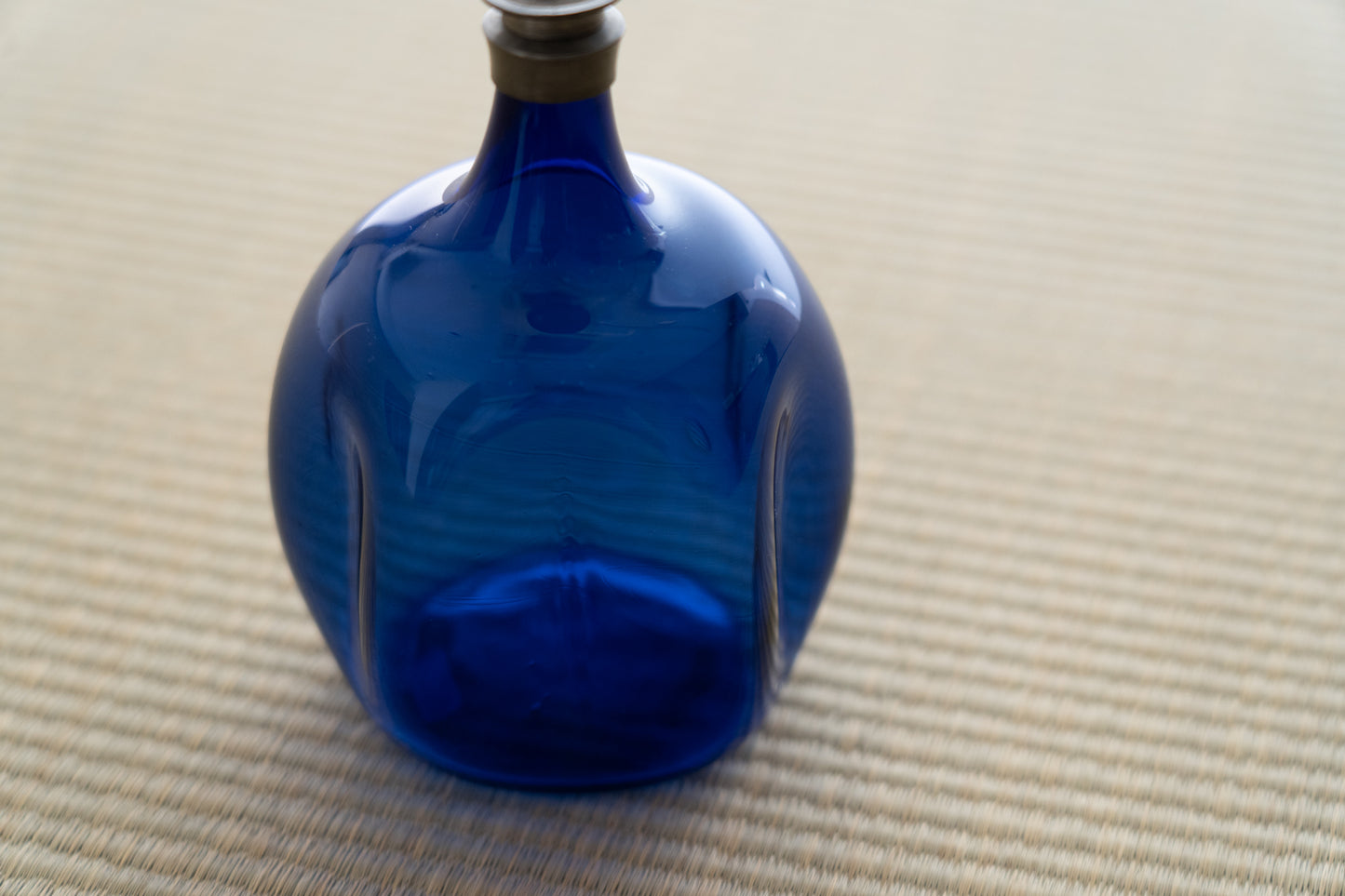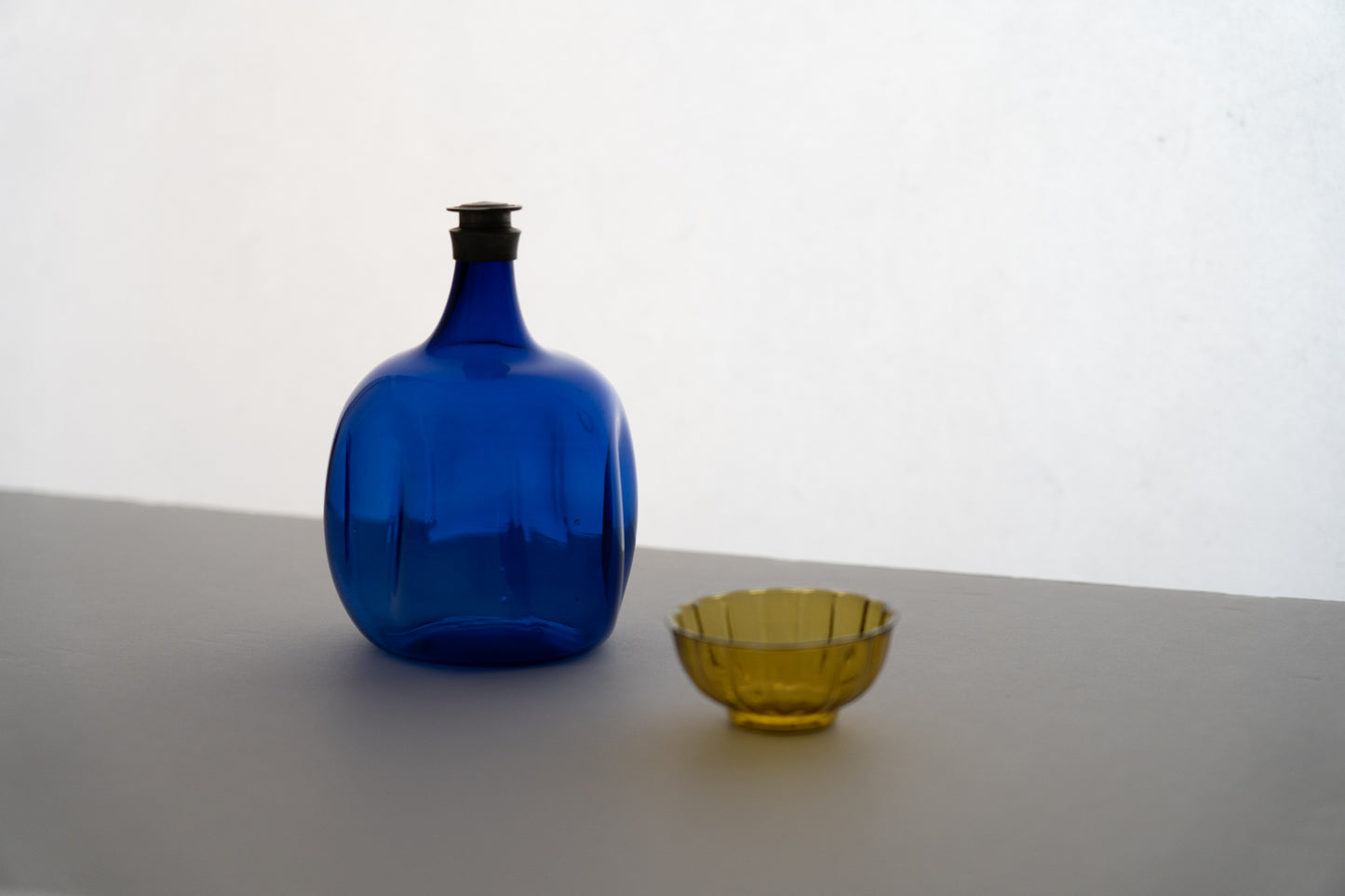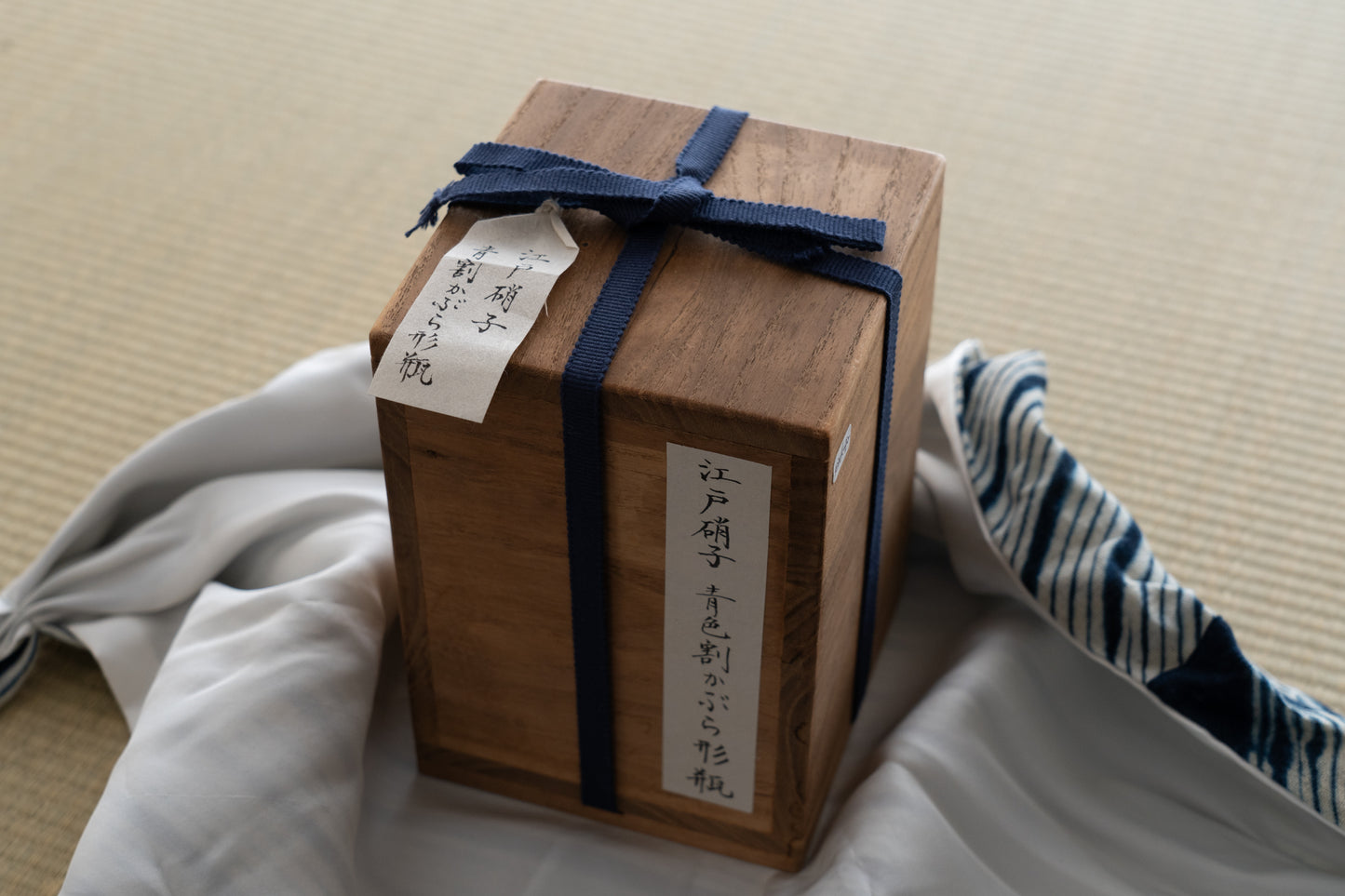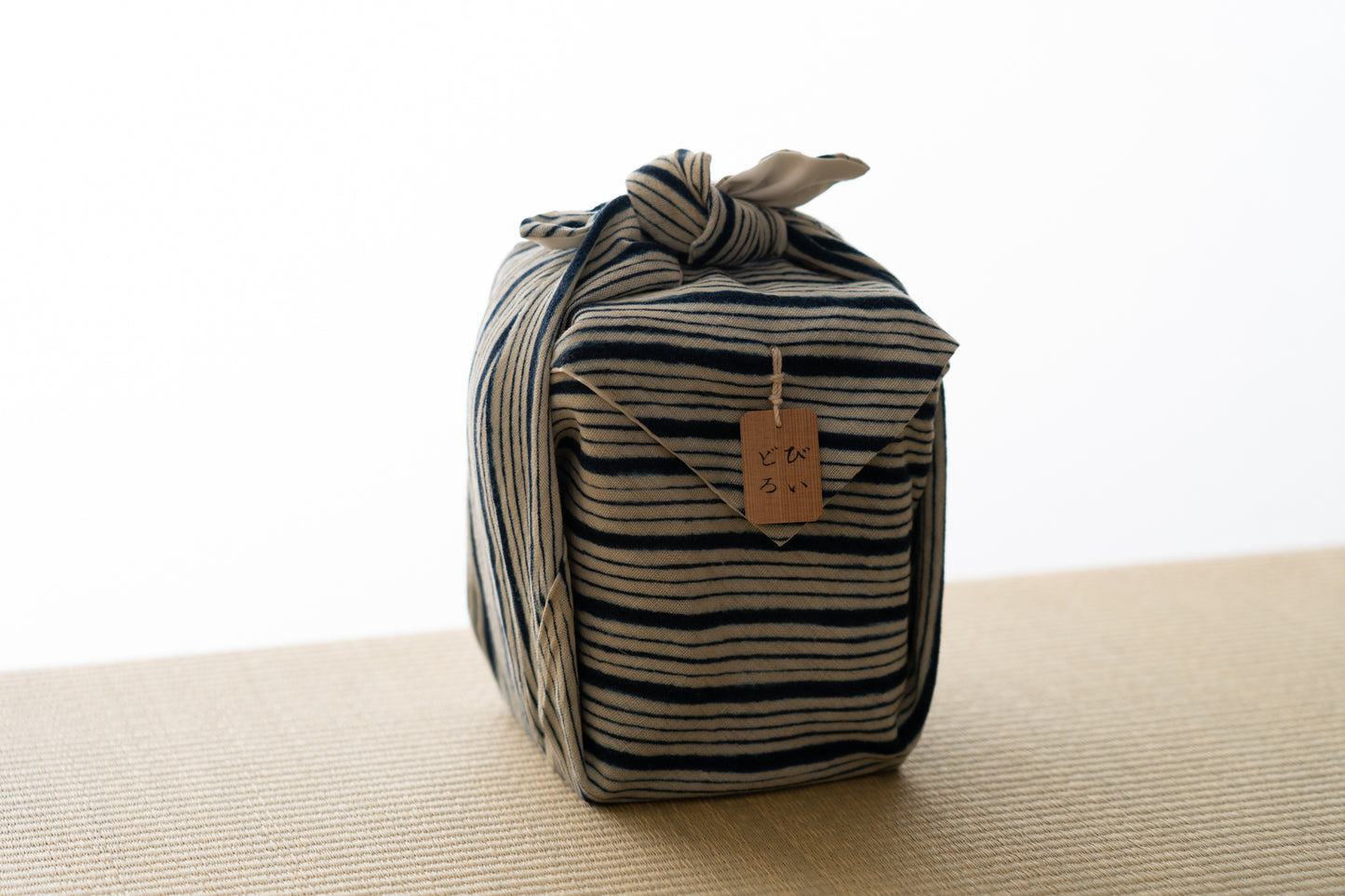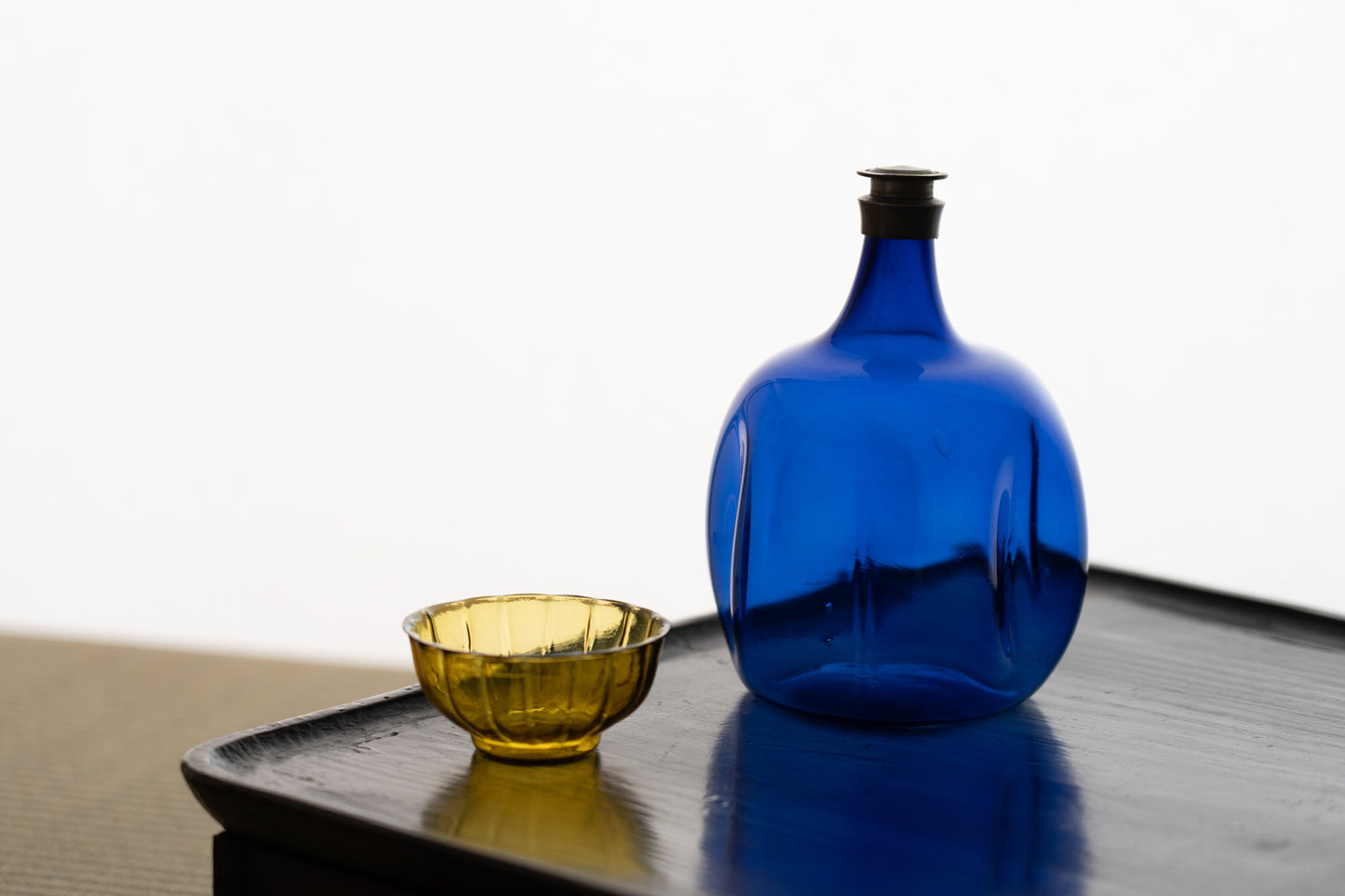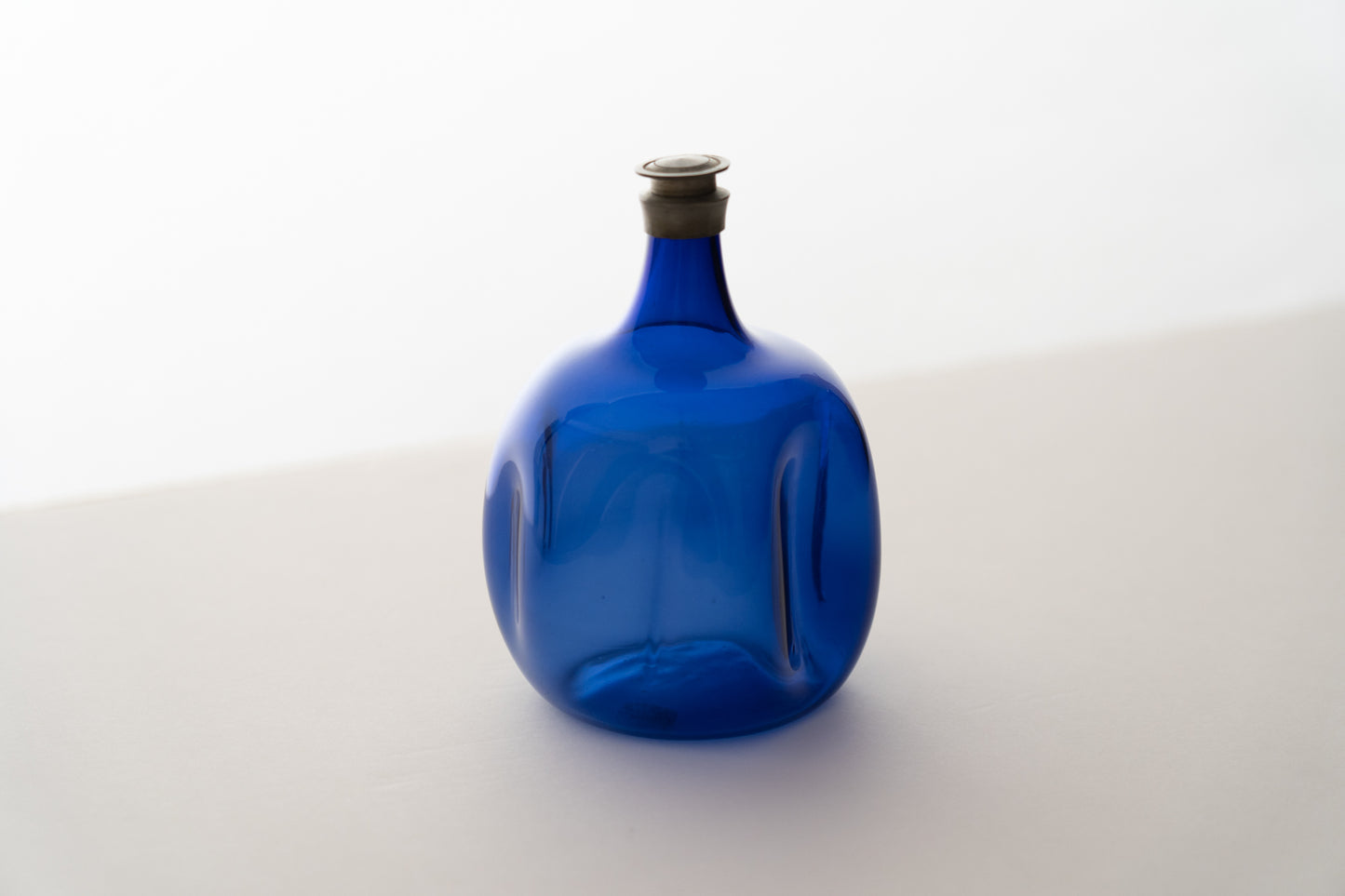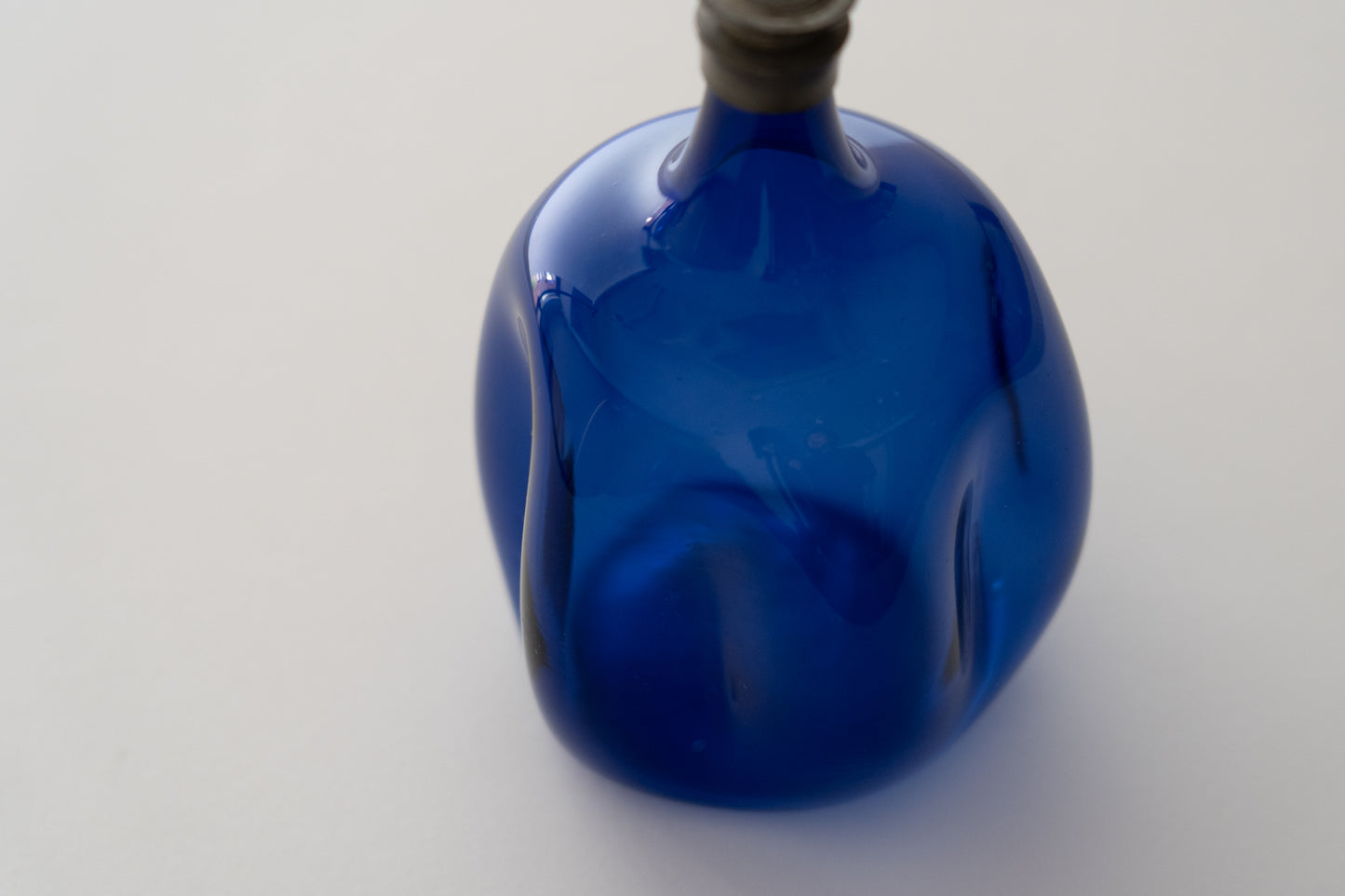Edo Glass Blue Turnip Sake Bottle
¥409,091
- Region/Era Mid-Edo period
- Size H13.3×W9.5×W9.0cm
- Condition good antique condition
- Accessory paulownia box
- No. 43nk-042
This Edo glass sake bottle will make you feel refreshed just by looking at it.
It is quite thick and looks like it has held up well as a practical container.

The transparent blue glass is bulging and has several vertical stripes on the sides.
Commonly known as "warikabura," this type of tokkuri can be made in two ways: by blowing the pottery into a mold with a curved edge, or by blowing the pot in mid-air and then pressing a heated iron rod into it to create the curve. This tokkuri was most likely made using the latter method.

Purple split gourd-shaped bottle made by mold blowing
(source: Yoshiro Kudo, "Bidoro: Glass Blown in the Edo Period," Yuzankaku Publishing, 1981
For reference, a similar bottle blown in a mold is shown above. Compared to molding methods that use a mold, which result in a more precise shape, a bottle blown in free space like this one is characterized by its soft shape. The distortion is rather characteristic of Edo Glass, and gives a pleasing impression.

The spout has a screw-on tin cap, allowing the lid to close tightly.
Since Portuguese trading ships first arrived in Japan, a large amount of Western glass was imported to Japan between the 17th and 19th centuries. Imported tin-topped flasks for storing wine or medicines were highly valued under the name of "furasuko (flasks)" and were so popular that blank empty bottles were later painted and sold as souvenirs.

Round green glass bottle with painted floral motif, made in the Netherlands or Germany (decorated in Japan)
18th century
(Source: "Gyaman: Longing for Imported Glass and Japan", Kobe City Museum of Art, 2014)
Much of the Japanese glass produced in Japan imitates the shapes of imported glass products, and tin-capped bottles are thought to have originated as imitation of imported flasks.
While most tin-mouthed bottles are square or have a turnip-like shape, I found an interesting example in the catalog that made me wonder where the split turnip shape of this piece came from.

Cut Rolf bottle, Dutch made, mid to late 18th century
(source: "Gyaman: Imported Glass and Japan" Kobe City Museum of Art, 2014)
This bottle is a wine bottle made in the Netherlands called a Cut Rolf. It has four tubes connected at the top and bottom and arranged like a pillar in the center. It seems that it was especially prized as a rare glass bottle at the time. The narrow waist shape of the Warikabura may have been inspired by such imported vessels.

To pick up and see the actual item in the gallery.
Reservation